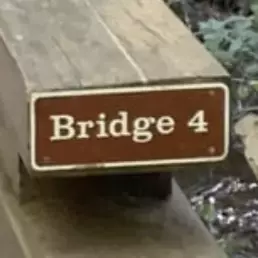- 2 Posts
- 32 Comments
- LinuxSBC@lemm.eeto
 ·11 months ago
·11 months agoThat should work, though you may want to look into Framework instead.
No, but you could always bridge it to Matrix.
People try to upload CP and get the admin arrested for hosting it.
- LinuxSBC@lemm.eeto
 ·1 year ago
·1 year agoIf you're rooted, you can use Pixel Launcher Mods (or Pixel Launcher Extended, which includes Pixel Launcher Mods). It themes all of them but Libro.fm automatically, and you can easily add an icon for anything missing (either making your own or using one from another app).
- LinuxSBC@lemm.eeto
 ·1 year ago
·1 year agoAs well as running on all distros, it also provides other benefits:
- You can run modern software on old/stable distros
- Dependencies being (mostly) included in the package means that different applications can more easily have different versions of dependencies
- Finicky packages are more stable for that same reason
- Distro maintainers don't need to package as many applications (https://lists.fedoraproject.org/archives/list/devel@lists.fedoraproject.org/thread/46ZZ6GZ2W3G4OJYX3BIWTAW75H37TVW6/), and application maintainers don't need to worry about multiple distros and versions of dependencies
However, some applications don't work as well because of the sandbox, but I think this will change with the rising popularity of Flatpak, as more developers will use portals instead of direct access. Also, there are some bugs and missing features, like how heavy use of the org.freedesktop.Flatpak portal for dbus causes a memory leak (https://github.com/flatpak/xdg-dbus-proxy/issues/51), but it's overall pretty good. Most applications I use are Flatpaks.
I'd recommend Fedora, but the suggestion of EndeavorOS is also good.
Dual-boot, and if anything is missing, boot back into Windows to do that while you work on figuring out how to do it on Linux. There might be something to do what you're asking, but I find it unlikely because Windows and Linux are very different internally.
So they figured out that a $130 Thunderbolt 4 100W E-marker cable is better designed than a $10 USB 2 60W cable? I think they should have looked at a cheaper high-end cable, like a 240W Thunderbolt 4 cable, to see how a comparable one compares.
In my opinion, phone cameras are usually used to capture a memory, not a moment. Memories are idealistic and inaccurate, so I don't think it's a problem that a way of "storing memories" is also inaccurate.
It's basically saying that the lock screen could not be started. It often happens when certain parts of the system, like SDDM, are updated without rebooting. From what I've heard, it should be fixed in Plasma 6.
- LinuxSBC@lemm.eeto
 ·1 year ago
·1 year agoFinally. I was having some weird graphical glitches, so I switched it to the Wayland backend, and I've not noticed any issues. It's totally stable (at least for me).
GNOME is doing really well at building a large set of applications that are well designed and integrate well with GNOME. Libadwaita makes it really easy to make apps, and it makes it really easy to make UI that is simple and easy to use. They also really try to support developers with developer tools, their GNOME Circle program, and this TWIG series providing new users. It's clearly paid off, as there are tons of really good GNOME applications with more being released every week.
- LinuxSBC@lemm.eeto
 ·1 year ago
·1 year agoSpeech to text.
The battery life is impressive, but I don't think they edited the article much. For example, this paragraph was left in:
"Another standout feature of this design is the size and quality of the display. At 16-inches across, this panel is dramatically larger than many of the branded products that are priced similarly, and with a natural resolution of xxx, it allows for more applications to share screen space."
- LinuxSBC@lemm.eeto
 ·1 year ago
·1 year agoThat is actually Unity. It's a mildly modified version used in Ubuntu Unity. Also, Xfce was also misspelled as XCFe.
userChrome.css, vertical tabs, better integration with the host system than Vivaldi or Edge, and support for fling scrolling that's not insanely fast on touchpads.
- LinuxSBC@lemm.eeto
 ·1 year ago
·1 year agoYes, and also RCS.





Most of what you said applies to the Linux kernel too. It's good to have other options, but being popular does not mean something is bad.